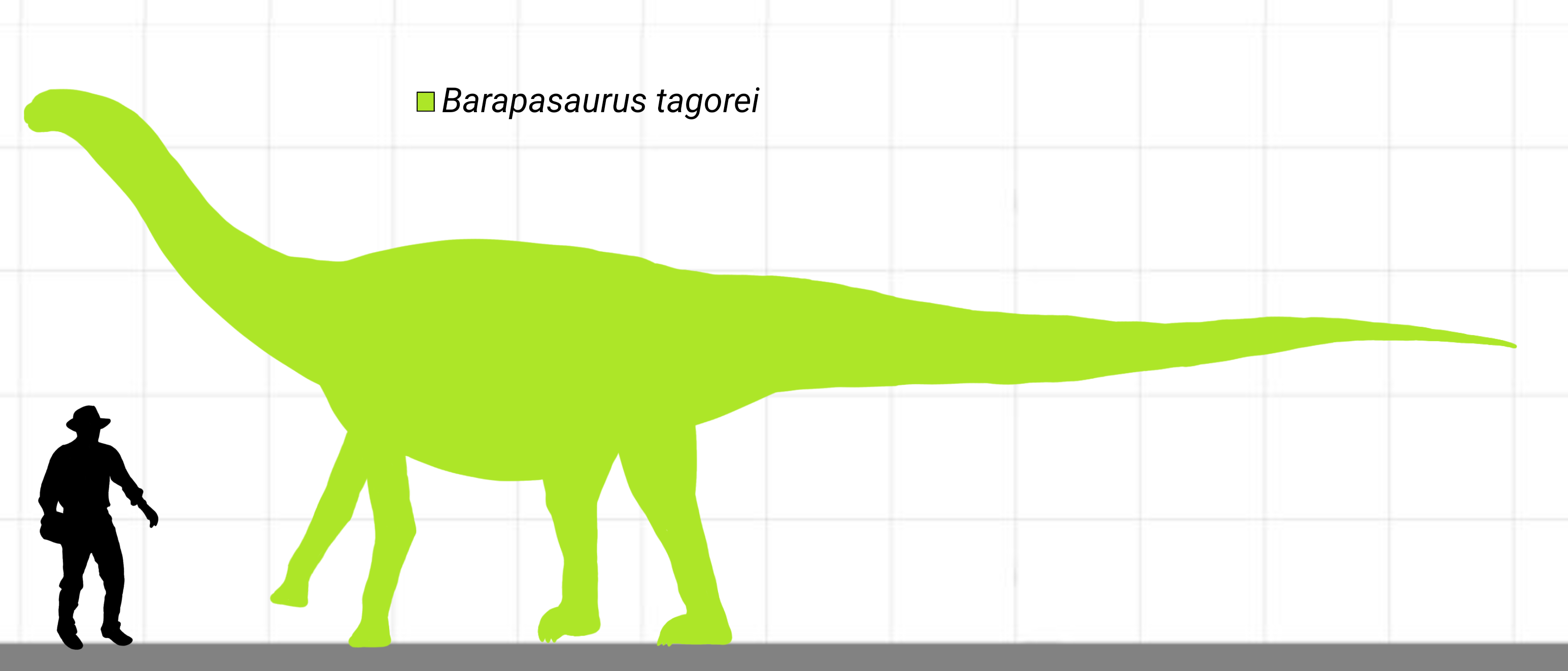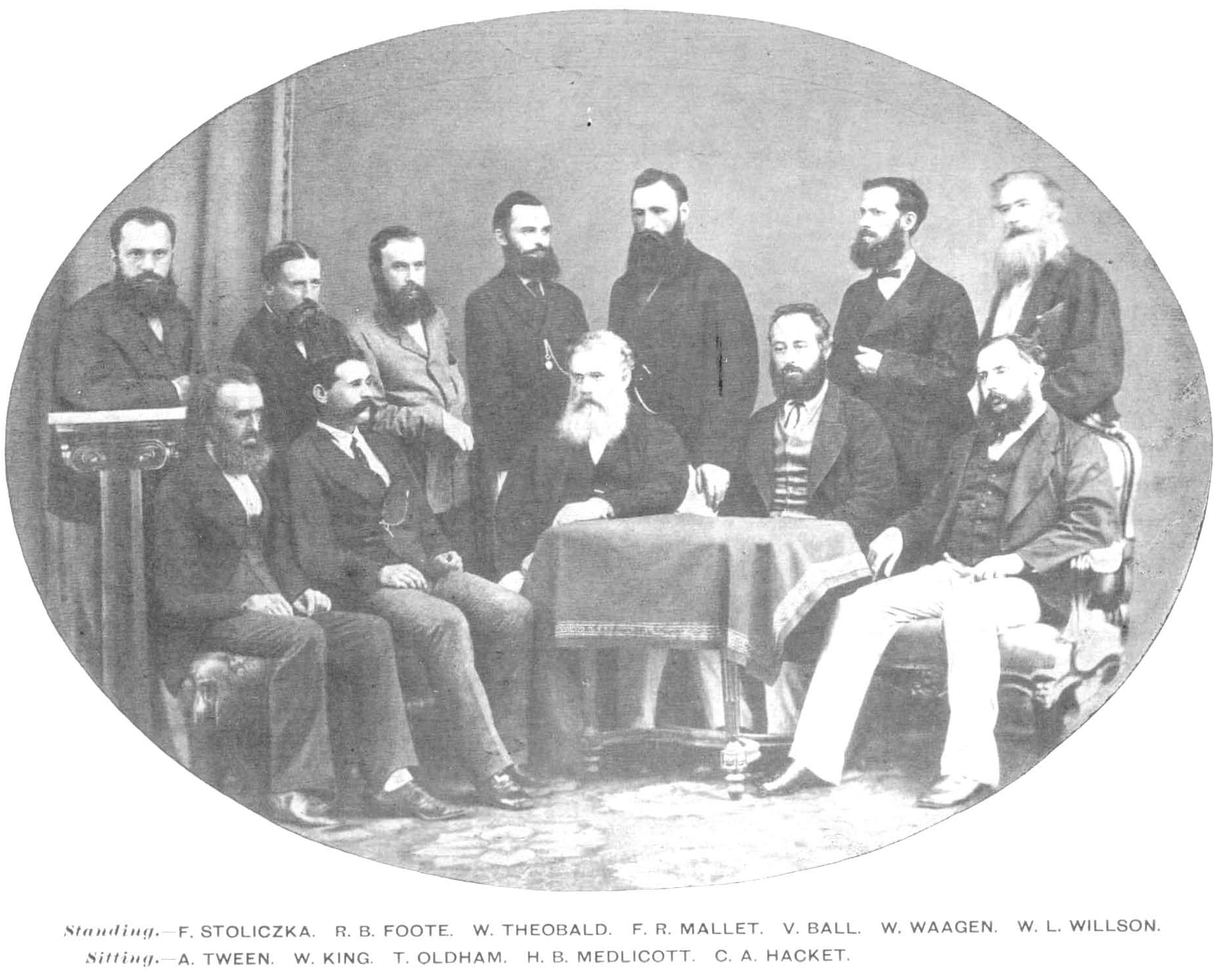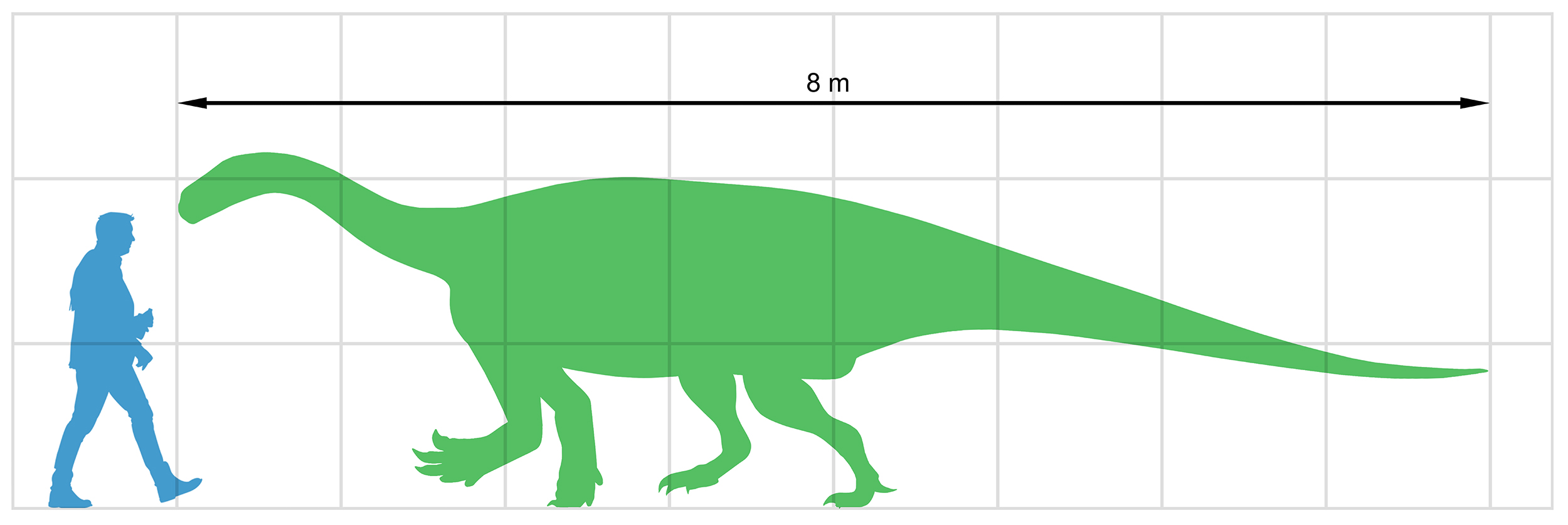|
Kotasaurus
''Kotasaurus'' ( ; meaning "Kota Formation lizard") is a genus of sauropod dinosaur from the Early Jurassic period (Sinemurian–Pliensbachian). The only known species is ''Kotasaurus yamanpalliensis''. It was discovered in the Kota Formation of Telangana, India and shared its habitat with the related ''Barapasaurus''. So far the remains of at least 12 individuals are known. The greater part of the skeleton is known, but the skull is missing, with the exception of two teeth. Like all sauropods, it was a large, quadrupedal herbivore with long neck and tail. Description ''Kotasaurus'' is one of the most basal sauropods known. The general body plan was that of a typical sauropod, but in several basal (plesiomorphic) features it resembles prosauropods. Like all sauropods, ''Kotasaurus'' was an obligate quadruped, while prosauropods were primitively bipedal. The body length is estimated at nine meters, with a weight of 2.5 tonnes, and therefore already comparable with that of later ... [...More Info...] [...Related Items...] OR: [Wikipedia] [Google] [Baidu] |
Birla Science Museum
B. M. Birla Science Museum is an Indian science museum located in Hyderabad, India. Constructed by civil engineer P. A. Singaravelu, it comprises a planetarium, museum, science centre, art gallery as well as a dinosaurium. The museum itself was the second phase of the science centre when it opened in 1990. The centre also houses India's first private Space Museum. The museum is a unique facility which is dedicated to history of the space program of India. The space museum was inaugurated in July 2019 and was curated by Pranav Sharma. Planetarium The Birla Planetarium is a wing of the Science Centre. The planetarium was inaugurated by N. T. Rama Rao, on 8 September 1985 and is one of three Birla Planetariums in India. The others are the Birla Planetarium, Kolkata, M.P. Birla Planetarium in Kolkata and Birla Planetarium, Chennai, B.M. Birla Planetarium in Chennai. Space Museum The space museum is one of a kind in the sense that it has been designed and curated in an interdisc ... [...More Info...] [...Related Items...] OR: [Wikipedia] [Google] [Baidu] |
Sauropods
Sauropoda (), whose members are known as sauropods (; from '' sauro-'' + '' -pod'', 'lizard-footed'), is a clade of saurischian ('lizard-hipped') dinosaurs. Sauropods had very long necks, long tails, small heads (relative to the rest of their body), and four thick, pillar-like legs. They are notable for the enormous sizes attained by some species, and the group includes the largest animals to have ever lived on land. Well-known genera include ''Brachiosaurus'', ''Diplodocus'', ''Apatosaurus'' and ''Brontosaurus''. The oldest known unequivocal sauropod dinosaurs are known from the Early Jurassic. ''Isanosaurus'' and ''Antetonitrus'' were originally described as Triassic sauropods, but their age, and in the case of ''Antetonitrus'' also its sauropod status, were subsequently questioned. Sauropod-like sauropodomorph tracks from the Fleming Fjord Formation (Greenland) might, however, indicate the occurrence of the group in the Late Triassic. By the Late Jurassic (150 million yea ... [...More Info...] [...Related Items...] OR: [Wikipedia] [Google] [Baidu] |
Barapasaurus
''Barapasaurus'' ( ) is a genus of basal sauropod dinosaur from Early Jurassic rocks of India. The only species is ''B. tagorei''. ''Barapasaurus'' comes from the lower part of the Kota Formation, that dates back to the Sinemurian and Pliensbachian stages of the early Jurassic. It is therefore one of the earliest known sauropods. ''Barapasaurus'' is known from approximately 300 bones from at least six individuals, so that the skeleton is almost completely known except for the anterior cervical vertebrae and the skull. This makes ''Barapasaurus'' one of the most completely known sauropods from the early Jurassic. Etymology The name ''Barapasaurus'' ("big-legged lizard") is derived from ''bara'' meaning 'big' and ''pa'' meaning 'leg' in several Indian languages including Bengali; the Greek word ''sauros'' means 'lizard'. This name was used as a ''nomen nudum'' since a femur measuring over 1.7 m was unearthed at 1961. The specific name ''tagorei'' means 'Tagore's', which honors ... [...More Info...] [...Related Items...] OR: [Wikipedia] [Google] [Baidu] |
Sauropod
Sauropoda (), whose members are known as sauropods (; from '' sauro-'' + '' -pod'', 'lizard-footed'), is a clade of saurischian ('lizard-hipped') dinosaurs. Sauropods had very long necks, long tails, small heads (relative to the rest of their body), and four thick, pillar-like legs. They are notable for the enormous sizes attained by some species, and the group includes the largest animals to have ever lived on land. Well-known genera include ''Brachiosaurus'', ''Diplodocus'', ''Apatosaurus'' and ''Brontosaurus''. The oldest known unequivocal sauropod dinosaurs are known from the Early Jurassic. ''Isanosaurus'' and ''Antetonitrus'' were originally described as Triassic sauropods, but their age, and in the case of ''Antetonitrus'' also its sauropod status, were subsequently questioned. Sauropod-like sauropodomorph tracks from the Fleming Fjord Formation (Greenland) might, however, indicate the occurrence of the group in the Late Triassic. By the Late Jurassic (150 million yea ... [...More Info...] [...Related Items...] OR: [Wikipedia] [Google] [Baidu] |
Chinshakiangosaurus
''Chinshakiangosaurus'' (JIN-shah-jiahng-uh-SOR-us, meaning "Chinshakiang lizard") is a genus of dinosaur and probably one of the most basal sauropods known. The only species, ''Chinshakiangosaurus chunghoensis'', is known from a fragmentary skeleton found in Lower Jurassic rocks in China. ''Chinshakiangosaurus'' is one of the few basal sauropods with preserved skull bones and therefore important for the understanding of the early evolution of this group. It shows that early sauropods may have possessed fleshy cheeks. Description and feeding Like all sauropods, it was a large, quadrupedal herbivore with long neck and tail. The body length of the only specimen is estimated at 12 to 13 meters. The remains consists of the dentary (the tooth bearing bone of the mandible) including teeth as well as several parts of the postcranium. By now, only the dentary and the teeth were studied extensively; the remaining skeleton still awaits a proper description. The dentary was curved in dor ... [...More Info...] [...Related Items...] OR: [Wikipedia] [Google] [Baidu] |
Kota Formation
The Kota Formation is a geological formation in India. The precise age of Kota Formation are uncertain, but it dates from the Early to Middle Jurassic, and is split into a Lower Member and Upper Member.Prasad GVR, and Manhas BK. 2007A new docodont mammal from the Jurassic Kota Formation of India Palaeontologia electronica, 10.2: 1-11 The lower member is thought to be Hettangian-Pliensbachian.Weishampel, David B; et al. (2004). "Dinosaur distribution (Early Jurassic, Asia)." In: Weishampel, David B.; Dodson, Peter; and Osmólska, Halszka (eds.): The Dinosauria, 2nd, Berkeley: University of California Press. Pp. 534–535. . While the upper unit is thought to be Toarcian, but may possibly extend into the Aalenian. It conformably overlies the Dharmaram Formation which is Late Triassic to earliest Jurassic and is unconformably overlain by the Early Cretaceous Gangapur Formation. The lower member is approximately 100 m thick while the upper member is 490 m thick. Both subunits primari ... [...More Info...] [...Related Items...] OR: [Wikipedia] [Google] [Baidu] |
Holotype
A holotype is a single physical example (or illustration) of an organism, known to have been used when the species (or lower-ranked taxon) was formally described. It is either the single such physical example (or illustration) or one of several examples, but explicitly designated as the holotype. Under the International Code of Zoological Nomenclature (ICZN), a holotype is one of several kinds of name-bearing types. In the International Code of Nomenclature for algae, fungi, and plants (ICN) and ICZN, the definitions of types are similar in intent but not identical in terminology or underlying concept. For example, the holotype for the butterfly '' Plebejus idas longinus'' is a preserved specimen of that subspecies, held by the Museum of Comparative Zoology at Harvard University. In botany, an isotype is a duplicate of the holotype, where holotype and isotypes are often pieces from the same individual plant or samples from the same gathering. A holotype is not necessarily "typ ... [...More Info...] [...Related Items...] OR: [Wikipedia] [Google] [Baidu] |
Specific Name (zoology)
In zoological nomenclature, the specific name (also specific epithet or species epithet) is the second part (the second name) within the scientific name of a species (a binomen). The first part of the name of a species is the name of the genus or the generic name. The rules and regulations governing the giving of a new species name are explained in the article species description. For example, the scientific name for humans is ''Homo sapiens'', which is the species name, consisting of two names: ''Homo'' is the " generic name" (the name of the genus) and ''sapiens'' is the "specific name". Historically, ''specific name'' referred to the combination of what are now called the generic and specific names. Carl Linnaeus, who formalized binomial nomenclature, made explicit distinctions between specific, generic, and trivial names. The generic name was that of the genus, the first in the binomial, the trivial name was the second name in the binomial, and the specific the proper term for ... [...More Info...] [...Related Items...] OR: [Wikipedia] [Google] [Baidu] |
Ilium (bone)
The ilium () (plural ilia) is the uppermost and largest part of the hip bone, and appears in most vertebrates including mammals and birds, but not bony fish. All reptiles have an ilium except snakes, although some snake species have a tiny bone which is considered to be an ilium. The ilium of the human is divisible into two parts, the body and the wing; the separation is indicated on the top surface by a curved line, the arcuate line, and on the external surface by the margin of the acetabulum. The name comes from the Latin (''ile'', ''ilis''), meaning "groin" or "flank". Structure The ilium consists of the body and wing. Together with the ischium and pubis, to which the ilium is connected, these form the pelvic bone, with only a faint line indicating the place of union. The body ( la, corpus) forms less than two-fifths of the acetabulum; and also forms part of the acetabular fossa. The internal surface of the body is part of the wall of the lesser pelvis and gives ... [...More Info...] [...Related Items...] OR: [Wikipedia] [Google] [Baidu] |
Geological Survey Of India
The Geological Survey of India (GSI) is a scientific agency of India. It was founded in 1851, as a Government of India organization under the Ministry of Mines, one of the oldest of such organisations in the world and the second oldest survey in India after Survey of India (founded in 1767), for conducting geological surveys and studies of India, and also as the prime provider of basic earth science information to government, industry and general public, as well as the official participant in steel, coal, metals, cement, power industries and international geoscientific forums. History Formed in 1851 by East India Company, the organization's roots can be traced to 1836 when the "Coal Committee", followed by more such committees, was formed to study and explore the availability of coal in the eastern parts of India. David Hiram Williams, one of the first surveyors for the British Geological Survey, was appointed 'Surveyor of coal districts and superintendent of coal works, Be ... [...More Info...] [...Related Items...] OR: [Wikipedia] [Google] [Baidu] |
Hyderabad
Hyderabad ( ; , ) is the capital and largest city of the Indian state of Telangana and the ''de jure'' capital of Andhra Pradesh. It occupies on the Deccan Plateau along the banks of the Musi River (India), Musi River, in the northern part of Southern India. With an average altitude of , much of Hyderabad is situated on hilly terrain around Hyderabad city lakes, artificial lakes, including the Hussain Sagar lake, predating the city's founding, in the north of the city centre. According to the 2011 Census of India, Hyderabad is the List of cities in India by population, fourth-most populous city in India with a population of residents within the city limits, and has a population of residents in the Hyderabad Metropolitan Region, metropolitan region, making it the List of metropolitan areas in India, sixth-most populous metropolitan area in India. With an output of 74 billion, Hyderabad has the fifth-largest urban economy in India. Muhammad Quli Qutb Shah established Hy ... [...More Info...] [...Related Items...] OR: [Wikipedia] [Google] [Baidu] |
Antetonitrus
''Antetonitrus'' is a genus of sauropod dinosaur found in the Early Jurassic Elliot Formation of South Africa. The only species is ''Antetonitrus ingenipes''. As one of the oldest known sauropods, it is crucial for the understanding of the origin and early evolution of this group. It was a quadrupedal herbivore, like all of its later relatives, but shows primitive adaptations to use the forelimbs for grasping, instead of purely for weight support. Discovery and naming Adam Yates (paleontologist), Adam Yates, an Australian expert on early sauropodomorphs, named ''Antetonitrus'' in a 2003 report co-authored by South African James Kitching. The name is derived from the Latin ''ante-'' ("before") and ''tonitrus'' ("thunder"), which refers to its existence, before other known sauropods, specifically ''Brontosaurus'' ("thunder lizard"). The one known species of ''Antetonitrus'' is called ''A. ingenipes'', from the Latin ''ingens'' ("massive") and ''pes'' ("foot"), because it shows the ... [...More Info...] [...Related Items...] OR: [Wikipedia] [Google] [Baidu] |







